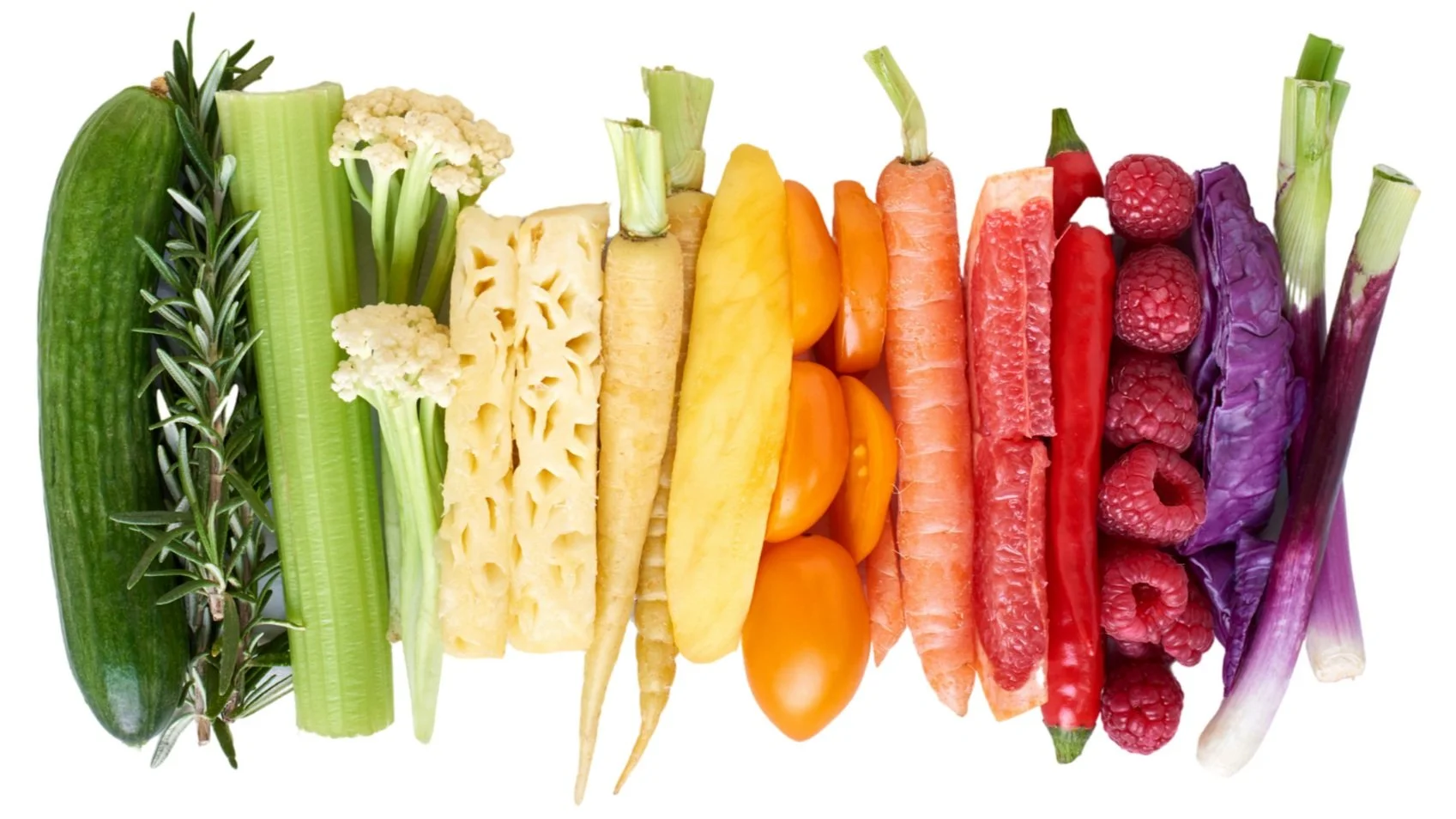Benefits of Eating the Rainbow
One of the easiest ways to increase the amount of nutrients in the diet is to eat the rainbow! Different colored fruits and vegetables offer different nutrients, so getting in one fruit or vegetable from each color of the rainbow per day provides optimal nutrient intake! A diverse diet is a healthy diet. There are many ways to make sure you get the nutrients you need and one easy way is to incorporate different colored produce.
Side note: When we talk about eating the rainbow, we’re talking about incorporating foods with colors that naturally occur in nature (like from fruits and vegetables). We’re not talking about different colored processed foods like red and blue Doritos—though that may be delicious!
Many fruits and vegetables, along with whole grains, legumes, nuts and seeds contain certain phytochemicals, which are naturally occurring chemical compounds known for their ability to help fight off disease. Here is a little more on each phytonutrient:
Isoflavones
Function: help to decrease cholesterol levels in the body
Found in: soy products, like tofu, tempeh, soy milk, or edamame
Thiols (a sulfur compound)
Function: detoxify carcinogens in the body
* a carcinogen is a substance with the ability of causing cancer in living tissues
Found in: onions, Brussels sprouts, garlic, and cabbage
Lycopene
Function: helps to reduce the risk of developing prostate cancer
Found in: tomatoes, grapefruit, watermelon, papaya
Lignans
Function: protects the heart, helps to reduce the risk of developing breast cancer
Found in: whole grains, flax seed, wheat germ
Resveratrol
Function: protects the heart, helps to prevent the formation of blood clots in the body, has antioxidant properties
Found in: grapes, blueberries, raspberries, dark chocolate
Completing the Rainbow
Eating foods from every color of the rainbow, every day, can seem like a challenge. There are so many ways to add fruits, vegetables, legumes, grains or seeds into your meals! Here’s a few:
Look at your plate. If you see the same few colors often, try swapping out one color for a new one you may not have that often!
Snacks count! If you’re in need of something to munch on in between meals, look to your rainbow to see what color you can add to your day.
Try meals that combine colors. Something like a homemade soup or salad could hit almost every color of the rainbow - that’s a colorful meal filled with nutrients!
Here are a few options from each color to try and add into your diet:
Red: bell peppers, strawberries, raspberries, tomatoes, grapefruit, cherries, grapefruit, pomegranate, watermelon, beets, apples
Orange: bell peppers, oranges, pumpkin, butternut squash, carrots, papaya, peaches, persimmons, sweet potatoes, nectarines
Yellow: bananas, bell peppers, pineapple, summer squash, golden kiwi, lemons, corn, apples, pears, starfruit, cauliflower
Green: spinach, green beans, zucchini, kale, broccoli, kiwi, honeydew, apples, pears, celery, cucumber, peas, avocado, limes, fennel, tomatillos
Blue/Purple: blueberries, blackberries, eggplant, red onion, red cabbage, figs, purple potatoes, plums, grapes
Brown: oats, flax seeds, peanuts, walnuts, whole wheat, tempeh
Keeping Kids’ Diets Colorful
It’s not always easy to get kids excited about trying new foods. Luckily, there’s a lot you can do with the rainbow motif to get them exposed to foods of various colors.
Have them play I Spy in your kitchen. Take turns naming a color that the other person has to find. This will get them to pay attention to fruits and vegetables they may not have noticed before. If they don’t know what something is but are interested in learning more, let them touch it and smell it, talk about how to prepare it, tell them what it feels like when you eat it (i.e., “Pomegranate seeds are juicy and crunchy and burst when you chew them.”). Don’t pressure them to eat it, but if they ask to, take a snacking break!
You can also play I Spy in the grocery store. If they get super interested in a particular item, buy it, and let them try it at home!
Make a family rainbow plate challenge! If there are multiple options for a meal, challenge everyone to have at least 3 colors on their plate. This will diversify their nutrition while giving them autonomy.
Play with your food! Set aside a time (not at meal time) to use the food in the house to make a picture. They’ll need to get creative and use lots of different ingredients of different colors to make their masterpiece. An easy art project that’s guaranteed to use lots of color—ask them to make a rainbow with the food in the house. Encourage creativity by asking them to do it a second time with all new ingredients.



